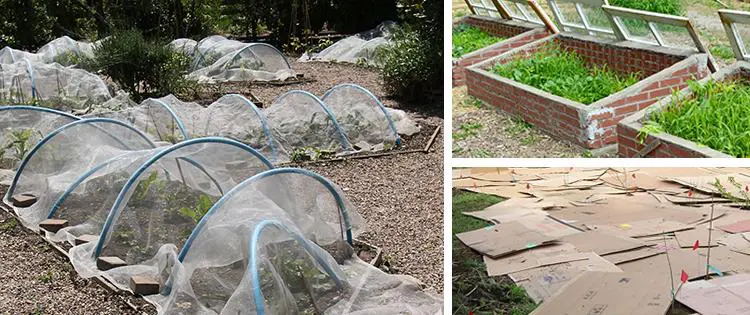During the summer and fall, most gardens are alive and kicking. However, winter weather is unpredictable, it rains, snows, it can be frosty or windy, and there is a constant fluctuation in temperature. These weather and temperature changes can have a negative effect on your garden if it isn’t properly protected during the winter months. The good news is that there are several things you can do to ensure that your garden stays alive during the cold season.
Add Some Mulch
Mulch prepares the soil for winter by making it easier for the rain to penetrate. It will also protect the roots. The best time to apply it during this season is right after the first hard frost because it will stabilize the soil’s temperature just before it starts to freeze. Applying mulch any earlier than this could lead to thawing and heaving. On the other hand, applying mulch too late will expose the roots of plants to temperatures too cold for them to handle.
The best mulch is wood chips or pine bark; as they degrade, they enrich the soil. Additionally, the layer of mulch applied should be 4 to 6 inches deep over the plants.

Use a Horticultural Fleece
A horticultural fleece (also known as a garden fleece), is basically a blanket or a jacket for plants. It is a lightweight sheet of material used to cover plants to protect them from harsh weather conditions and pests. However, it is most commonly used for protecting plants from frost. In some climates, gardeners use the fleece to cover their plants throughout the winter season so that they can survive until spring.
The horticultural fleece can be cut into any size to fit your plants; it is also important to mention that even though they are easy to use because of their lightweight material, you will need to ensure they are properly secured. You can achieve this with rocks or stakes.
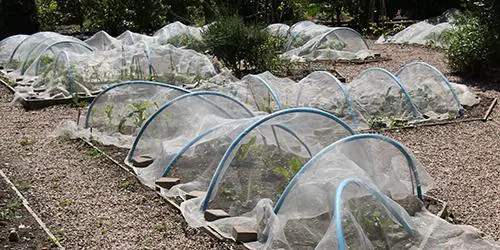
Use a Cold Frame
This simple structure will protect your vegetables during the winter. A cold frame is similar to a greenhouse, but it doesn’t have heat or shelves. Vegetables are planted directly on the ground, or they are in pots. The top of the cold frame is made from glass or plastic so that vegetables are exposed to the winter sunlight. To provide good air circulation, the top opens like a door.
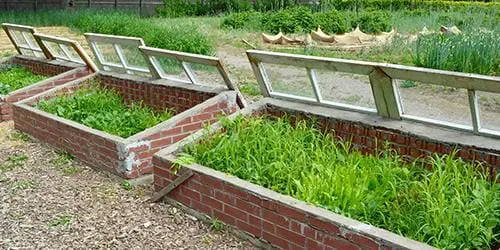
Treat Your Soil Well
Due to the changes in temperature and weather conditions during the winter, you will need to give your soil additional attention so that it gets the right nutrients during this time. Here are some tips on how to do so:
- Well-rotted manure: If you are on good terms with your local farmer, you can get some of this for a decent price. The manure should be at least 18 months old.
- High-Quality Compost: It is best to use organic compost during the winter. Additionally, it should originate from a renewable peat source, or it should be peat-free.
- Leaf Mould: Leaf mould is a powerful nutritional source for soil. It should have been rotting for 12 to 18 months.
- Wormcast Fertilizer: You can add some extra nutrients to your soil by adding a few handfuls of wormcast fertilizer over a raised bed.
- Decomposed Wood Chip: Woods chips that have been broken down for a couple of years will provide your soil with some nutritious crumbly compost.
The amount of compost you use will depend on the current quality of your soil. Loamy soil won’t require as much as heavy, clay soil. If you are guilty of neglecting your soil, or you’ve just started new beds, add a 5-10 cm layer of compost. If you’ve spent the year taking care of your soil, a layer of 3-5 cm will be enough.
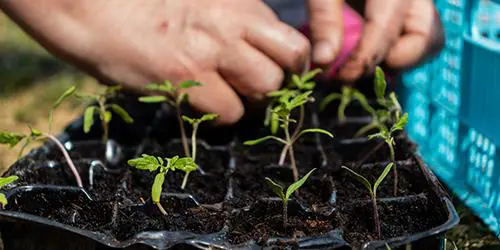
Minimize the Negative Effects of Frost
During frosty weather, the grass blades freeze. When grass is walked on when its frozen, the blades can break. Without getting too scientific here, when the water molecules expand and a heavy object presses against the frozen blades, it damages the grass on a cellular level. When grass has been damaged like this, you will notice a beige or white hue on the blades. The grass will recover, but you might need to wait until spring for your lawn to return to full health.
The easiest way to minimize the negative effects of frost during the winter months is not to walk on it. But for some people, this might not be possible, so you can follow these tips instead:
- Deep Watering: Water the grass in the evening and the ice will slowly evaporate overnight. Evaporation creates heat and friction around the grass blades and so the lawn won’t get to the freezing temperature required for molecule expansion which is what causes the damage.
- Mow When the Sun is High: The sun will sometimes show its face during the winter months; and when it gets high enough, it will melt the frost.
- Use Warm Water: Alternatively, instead of waiting for the sun, you can use a warm water sprinkler to melt the frost.
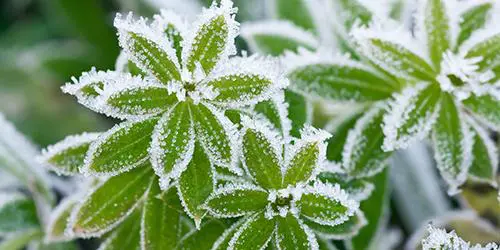
Cover the Ground
If you have a vegetable garden, you can cover it with a layer of cardboard, black plastic or some old carpet. Leave the covering in place during the winter months until you are ready to plant again in spring. Covering the ground in this way will kill any weeds that are currently present and suppress sprouting seeds.
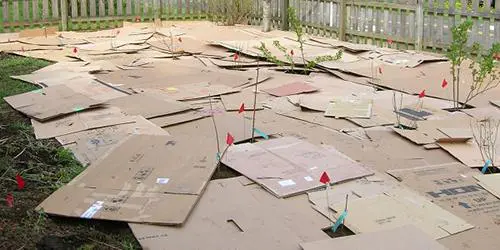
Don’t Allow Things to Dry Out
The last thing most people want to do during the winter is to go outside and do the watering. However, you need to keep everything moist or you will run into major problems when you go to start planting again. Even the areas where there is nothing growing should be kept moist because dirt is made up of living things and they need water to survive.
Preparation is key when it comes to protecting your garden during the winter months. What you don’t want is for the cold to kick in when you least expect it to, and you end up scurrying around trying to get things together. Experts advise that you start the process in November by giving your garden a good clean. Get rid of all the debris and transfer any unwanted matter to the compost heap. Perennial plants should be cut back to soil level, and make sure your potting shed is in order if you have one. But in general, if you follow the above recommendations, you can expect your garden to survive during the winter.
You may also like:
If You See This Plant in Your Backyard, Burn It Immediately! (Video)
How To Heat Your Home Without Electricity
50 Off the Grid Homesteading Tips and Tricks

